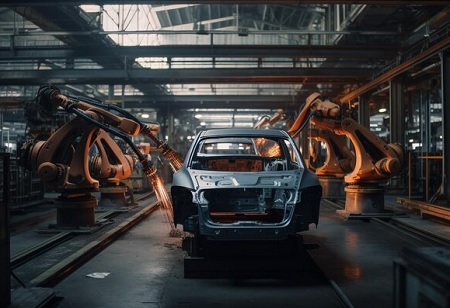
Italy Allocates $1 Billion in 2024 Subsidies to Revitalize Car Industry

 Italy's industry ministry has announced a subsidy plan of 950 million euros ($1 billion) for this year, aiming to encourage the adoption of eco-friendly vehicles and provide a stimulus to the automotive sector. This initiative emerges amidst tensions between Italy's right-leaning government and Stellantis, the owner of Fiat, regarding production levels within the country. Prime Minister Giorgia Meloni recently expressed concerns, stating that Stellantis, with significant operations in France and America as well, has occasionally acted in ways contrary to the national interest.
Italy's industry ministry has announced a subsidy plan of 950 million euros ($1 billion) for this year, aiming to encourage the adoption of eco-friendly vehicles and provide a stimulus to the automotive sector. This initiative emerges amidst tensions between Italy's right-leaning government and Stellantis, the owner of Fiat, regarding production levels within the country. Prime Minister Giorgia Meloni recently expressed concerns, stating that Stellantis, with significant operations in France and America as well, has occasionally acted in ways contrary to the national interest.
Rome is set to offer subsidies of up to 13,750 euros for individuals with lower incomes, facilitating their purchase of a new fully-electric vehicle priced up to 35,000 euros (excluding VAT). The subsidy includes a component tied to the scrapping of an existing polluting combustion-engine car. Additionally, individuals in the same income bracket can avail themselves of a subsidy of up to 10,000 euros for a new plug-in hybrid, with a permissible cost of up to 45,000 euros.
This subsidy program extends to state-of-the-art combustion engine vehicles, albeit with reduced amounts. The new incentives, surpassing their predecessors, which were capped at 5,000 euros for electric vehicles, are part of a comprehensive multi-year initiative announced by Italy in 2022, allocating over 8 billion euros to bolster its automotive industry. Davide Mele, Stellantis Italy's head of corporate affairs, emphasized the significance of the package in addressing Italy's sluggish transition to electric cars and supporting the local automotive sector.
Mele stressed the crucial connection between production and market demand, underscoring the need to consider both consumers and producers when striving for specific objectives. He highlighted the role of stimulating demand with affordable cars in achieving these objectives. Discussions between the government and Stellantis, Italy's primary automaker, have been ongoing since the summer, aiming to formulate a long-term plan to reverse the production decline. This plan includes an ambitious target to increase Stellantis' annual output in the country to one million vehicles, contrasting with the approximately 750,000 vehicles produced in 2023.

